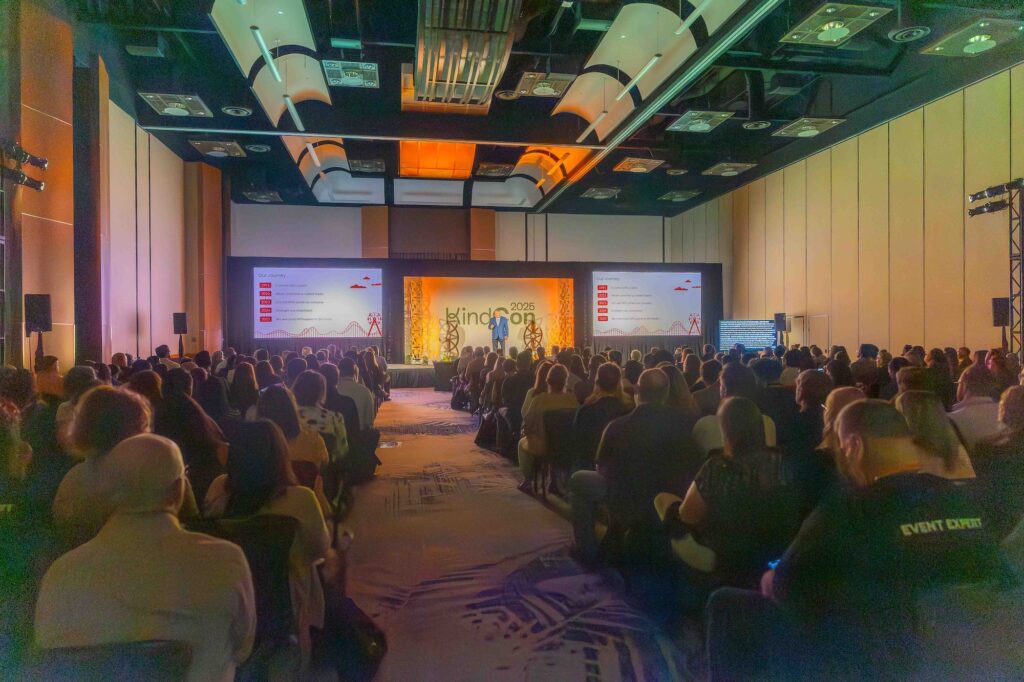
Looking to fundraise for you healthcare organization? There are a lot of factors that go into successful fundraising. Make sure you understand what it means to assemble the best team and how to identify the right people to ask for gifts.
The success and growth of your organization may hinge on healthcare fundraising, and iWave is here to break down a winning fundraising strategy. Let’s get started!
What is Healthcare Fundraising?
Healthcare fundraising is how your institution raises valuable donations to help support operations and continue saving lives. This allows you to expand your mission and raise enough money to build a new wing or buy the latest technology.
Most importantly, fundraising is how you continue to support your staff and your patients, ensuring you’re on the cutting edge of medicine.
Healthcare Fundraising: How it Works
Fundraising for healthcare organizations is typically broken down into two types of campaigns:
-
Annual Campaigns
Annual campaigns are used when there isn’t a specific, tangible cause that donors can pledge their support to. Instead you’re just asking for a donor to assist your organization so you can continue your mission.
Annual campaigns can be implemented through many methods such as an auction or a black-tie event. A grateful patient program is another useful annual campaign as you can take donations on a rolling basis.
-
Capital Campaigns
Capital campaigns are better suited when a specific goal and a rigid timeline are in mind, say when you want to construct a new building. However, you can also use this fundraising method when you need new equipment or renovations.
This type of fundraising is broken down into two stages: Private (quiet phase) and public. The majority of donations are received in the private stage, so it’s important to identify the proper donors by this point.
Types of Healthcare Donations
-
Major Gifts
The majority of donations your hospital will receive will be major gifts. These are usually obtained from a grateful patient program which consists of former or current patients who are likely to give back to the organization that helped them get healthy.
A grateful patient program requires you to identify potential donors with the capability and inclination to support your healthcare organization. For example, if a former patient has given to hospital programs in the past, they are more likely to give to your organization as well.
-
Planned Gifts
Planned gifts are typically made as a moving gesture to make a major investment in your medical facility. An example of this would be a donor purchasing a wing in their mother’s honor after you provided her with years of quality treatment and care.
Planned gifts can also be identified using a grateful patient program, so it’s important to uncover potential donors as they walk in the door. Visiting a new donor while they are still at your facility helps to create a stronger relationship, making them more likely to want to contribute.
-
Payroll Deductions
If your healthcare organization is really in need of new funding, you can resort to payroll deductions from your staff to help cover important costs. These cuts can be small or significant based on what your financial needs may be.
Of course, supporting your staff is always a top priority, so establishing a successful grateful patient program may be able to help you avoid this fundraising method.
The type of healthcare donation you choose depends on your organization’s mission. If you’re looking to purchase brand new equipment, a planned gift may be the best route to go, but a major gift is a great way to continually raise support for your hospital.
Success of the fundraising largely depends on your grateful patient program so make sure you have the right tools to assist you!
How to Identify Healthcare Fundraising Prospects
Now that you know the types of donations you may receive, you may be wondering who to seek out for a gift ask. Some of the people you can ask for support include:
- Physicians: Whether it’s the physicians that work for you or a retired cardiologist looking to help you build a new heart disease program, doctors are a great resource for raising support for your healthcare organization.
- Hospital Employees: Other employees in your hospital may be willing to help contribute to bettering the place where they work. You can host fundraising contests between different departments or offer them exclusive hospital merchandise, so they can wear your organization’s name and logo with pride—further spreading your mission.
- Grateful Patients: As previously mentioned, former patients are very likely to give back to the institution that helped them. Make sure you’re using the right wealth screenings to uncover which patients may be more likely to provide a major gift.
- Corporations: Major businesses may be likely to sponsor an event for you or even donate an item to a silent auction. Create sound relationships with various corporations in your area to help get community support.
- Healthcare Foundations: Foundations are always looking for new programs that align with their mission to support the health of the community. For example, a cancer society would be willing to help fund your research, so make sure to stay connected to foundations whose missions align with yours.
- Communities: Many communities are likely to donate in memoriam of one of your patients or to thank you for their neighbor’s recovery. Reach out to the local community and see if anyone would like to launch their own fundraising event to support your hospital.
- Families: If your team worked hard to save the life of a donor’s mother, they may thank you with a donation to the organization that helped her.
- Grant Organizations: Grants are given from organizations to help support like-minded nonprofits and their specific needs. For this type of donation, a grant proposal will need to be written and specific goals will need to be recognized.
The right fundraising platform will make identifying the best prospective donors easier, so you can save time and resources. Make sure you’re assembling a hardworking team with the best tools to ensure you’re getting the donations you need.
Assembling a Healthcare Fundraising Team
You know what types of donations you may get and who to ask for them from, so now you’re ready to create a healthcare fundraising team.
Development Committee
This is the team that will run your healthcare fundraising initiatives. Typically, this committee will be led by your hospital’s executive or developmental director and is responsible for supporting capital and annual campaigns and putting them into action.
They are also in charge of asking for gifts from grateful patients, doctors, and other potential donors. Since they are so crucial for raising donations, it’s important you hire the right team.
This team needs to understand your healthcare organization’s culture and mission and be diverse enough to reach a wide range of potential donors. For example, having members for this committee from various departments or medical backgrounds can help reach a wider range of donors.
Major and Planned Giving Officers
When working with more major donations, this will be your go-to team. Some of their top priorities include conducting prospect research, organizing your prospective donor database, maintaining donor relationships, and promoting fundraising opportunities. Clearly, since this team works hands on with donors, they need to be personable and know how to cultivate strong relationships.
Hospital Administration
These staff members are not directly involved in fundraising but still play a key role. They are essential for creating a successful patient program and need to make sure patients are having a positive experience from the moment they walk through the hospital doors.
Having an administrator check on a potential donor and ensure they are having a satisfactory stay makes them more likely to donate further down the line.
Doctors and Nurses
Just like with your administrative staff, you need your doctors and nurses on board to keep potential donors satisfied. Make sure your doctors and nurses are taking the time to sit down one on one with patients and explain to them all their options and answer their questions. They’ll be more relaxed knowing their best interests are at heart.
Many times, their life Is literally in your hands, so it’s important they feel safe and supported.
Performing the Proper Prospect Research
Why is Prospect Research Important?
As mentioned before, a properly constructed grateful patient program sets you up for greater success when it comes to fundraising. In order to establish a potential donor list, you first need to perform thorough prospect research.
As we discussed earlier, capacity and inclination to give are the most important factors contributing to who is a great potential donor. When it comes to performing prospect research, you want to analyze a wide array of information.
To speed things up, you can utilize a next-generation fundraising platform to perform the research for you. The proper tools can help you save time while still achieving your goals. This ensures you more time to enact change on the ground in the healthcare community.
How Can You Work Prospect Research into Your Fundraising Strategy?
-
Daily Patient Screenings
By performing wealth screenings regularly, you’ll be able to identify potential donors as they walk through the door.
Once you locate a patient with a great propensity to give, you can send your administrative staff over to check on them and ensure they’re having a positive stay. You can also alert your doctor and nurse staff, so they can guarantee a solid personal connection is being made.
-
Patient Screening Services
Your development committee and giving officers probably have a lot on their plate helping allocate funds to various healthcare programs or put together your next fundraising event. Help to lessen their load by employing a patient screening service. By using a fundraising platform, you’ll have technology that quickly does the hard work for you.
Look for a service that aligns with your beliefs and provides you with a supportive team to answer any questions that may arise along the way. You may also want to choose a platform that comes with a mobile companion application so you can perform daily screenings while walking through hospital halls or taking the elevator to your next meeting.
-
In-House Prospect Team
An in-house prospect team will then take these wealth screenings and put them into action. Whether they’re calling past patients to ask for a gift or scheduling a visit to a current patient to help them become a future donor, assembling an in-house team has a range of benefits.
Best Practices for Healthcare Fundraising
With your grateful patient program and potential donors list in hand, you’re now ready to start implementing fundraising efforts. Be as creative as possible with your healthcare fundraising to better engage your donor pool. Some of the ways you can have fun with fundraising include:
-
Host a Fundraising Event
In addition to pulling in potential donors and past patients, events are a great way to generate community involvement as well. You can host a museum gala or a charity auction with donated gifts to help donors feel like they’re receiving something in return.
-
Sell Merchandise
In your hospital store you should carry a range of merchandise with your organization’s branding on it. Not only does this help generate capital, but it spreads your mission when the merchandise is being worn or carried around as well.
If you’re fundraising for a specific mission you can also create an exclusive t-shirt or hat to help generate donations. Make sure your merchandise is proudly displayed at any event you host to maximize fundraising.
-
Consider Corporate Philanthropy
Engaging corporations is a great way to further spread your mission and get the highest amount of fundraising. Some companies even offer matching for any gifts their employees make, so these would be great companies to reach out to and get added funding for your projects.
-
Update Fundraising Regularly
Donors want to know where their money is going to. Make sure to send regular updates to your grateful patient program so they will be more inclined to continue giving in the future. Even if someone hasn’t donated before, you should send them an update to inspire them donate as well.
Healthcare Fundraising: Legal Guidelines
As a healthcare organization, it’s important you’re always considering HIPAA (The Health Insurance Portability and Accountability Act). This legal measure is made to ensure a patient’s confidential medical records and healthcare information.
When creating your grateful patient program, make sure the following information is excluded:
- Diagnosis
- Nature of service
- Medical treatment
To ensure the best healthcare practices are maintained, make sure every member of your fundraising team is knowledgeable about HIPAA and how to stay within the proper legal guidelines.
How Can our Fundraising Software Help?
You’ve heard a lot about grateful patient programs and how the proper tools can help empower your organization. At iWave, we offer a next generation platform built upon billions of datapoints, each helping to create an accurate picture of who may be a potential donor. We’ll help uncover the best donors so you can fundraise with greater confidence.
Learn more about our software by requesting to watch a demo or by scheduling a free assessment to see how iWave can be tailored to your organization’s specific needs.
Be the first to read our resources.
The world is changing quickly—and our resources help you stay on top of it all. Sign up to get new insights, success stories, and more, sent right to your inbox.



